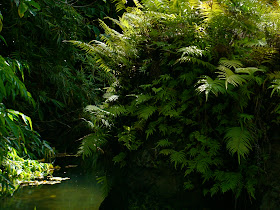Sunday is barbecue day! Dining alfresco in the gardens with the grill nearby is one of our simple joys living in the farm. We grill practically anything: meats, fish, veggies, bananas even! To enjoy this lifestyle though, you need a steady supply of charcoal. So... we make our own!
Admittedly, this is one that I really had no clue we could be able to do in our place. I don't need to share any longer where I first thought they came from, but it turns out the locals use plain firewood (the most common in our area being Mádre de Cacáo [Gliricidia sepium]) to be self-sufficient.
But it is no easy task. It is laborious, yes; but it is also imprecise and calls for much experience to flawlessly and efficiently turn your firewood to charcoal.
So Mang Dimô, one of the better mag-uúlings in our bárrio, works in our place and makes it for us. He makes a pit in the ground for an on-the-spot, built-in earthen oven to put the chopped firewood and cover it with coconut palápas (fronds) topped with soil (or something like that, that's how I understand it). Then he lights a fire on one end and leaves it for some days until he sees a signal that it is already done.
Home-made, chemical-free charcoal briquettes to grill our free-range chicken with veggies grown by us, for Sunday lunch in the garden, under the mango tree: priceless...









































